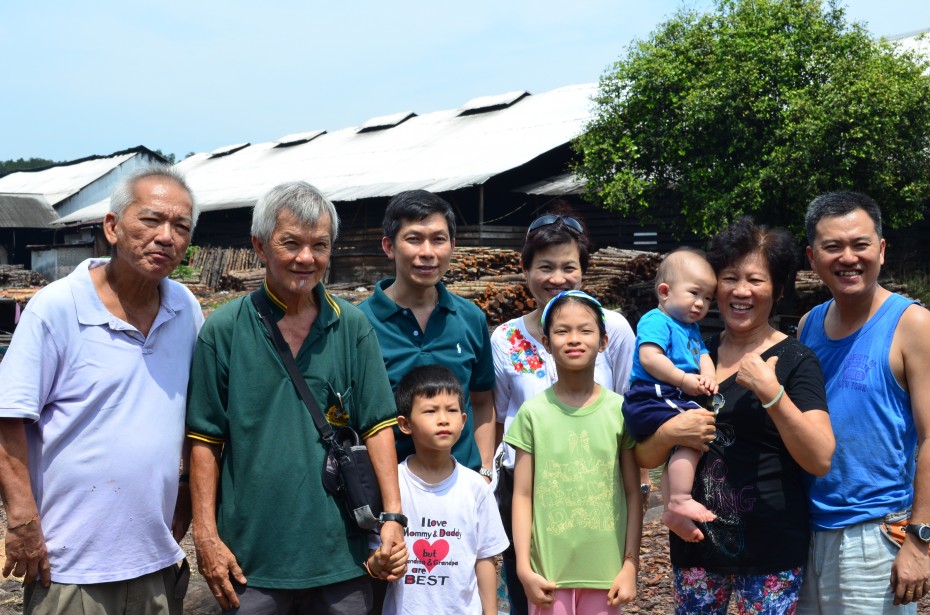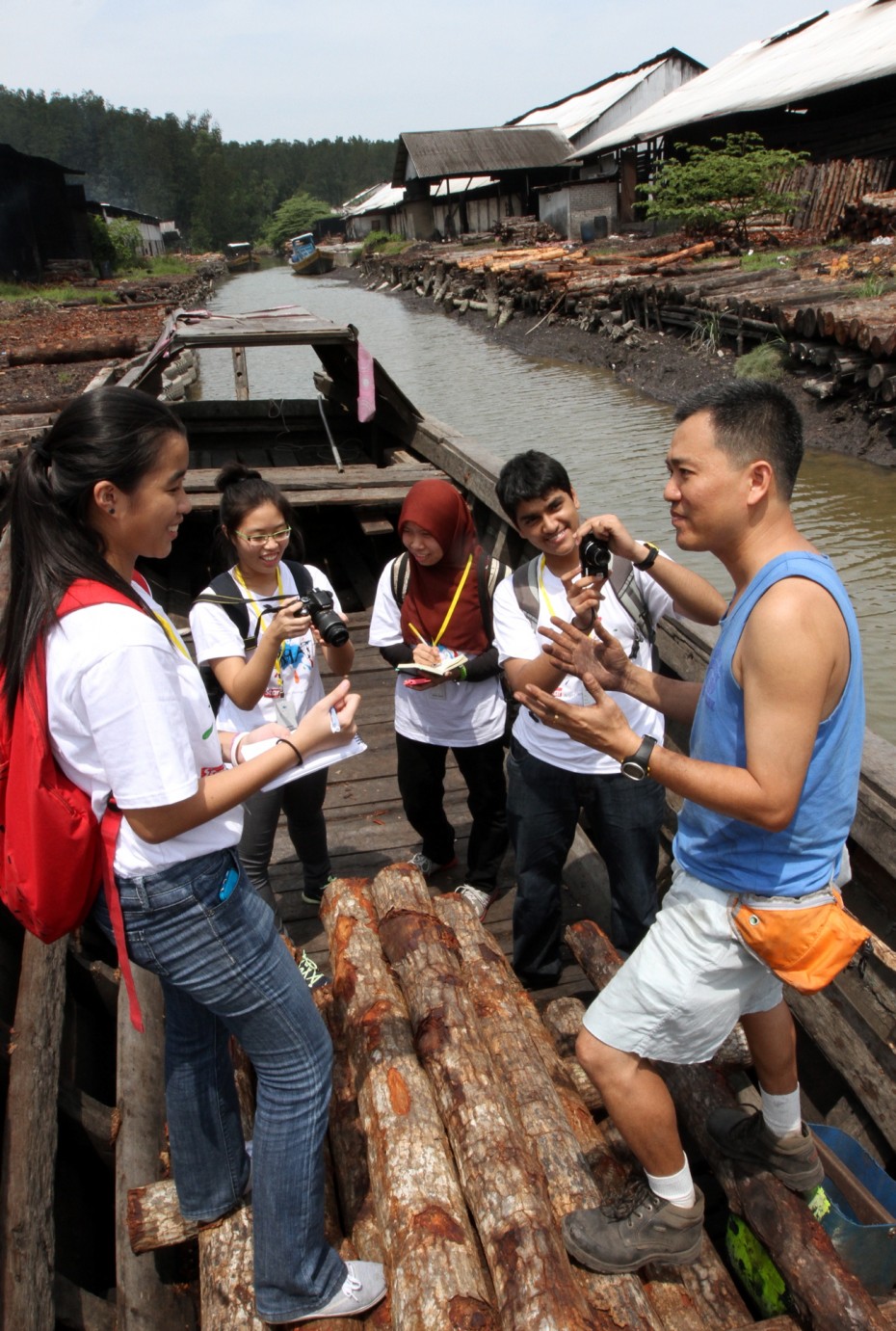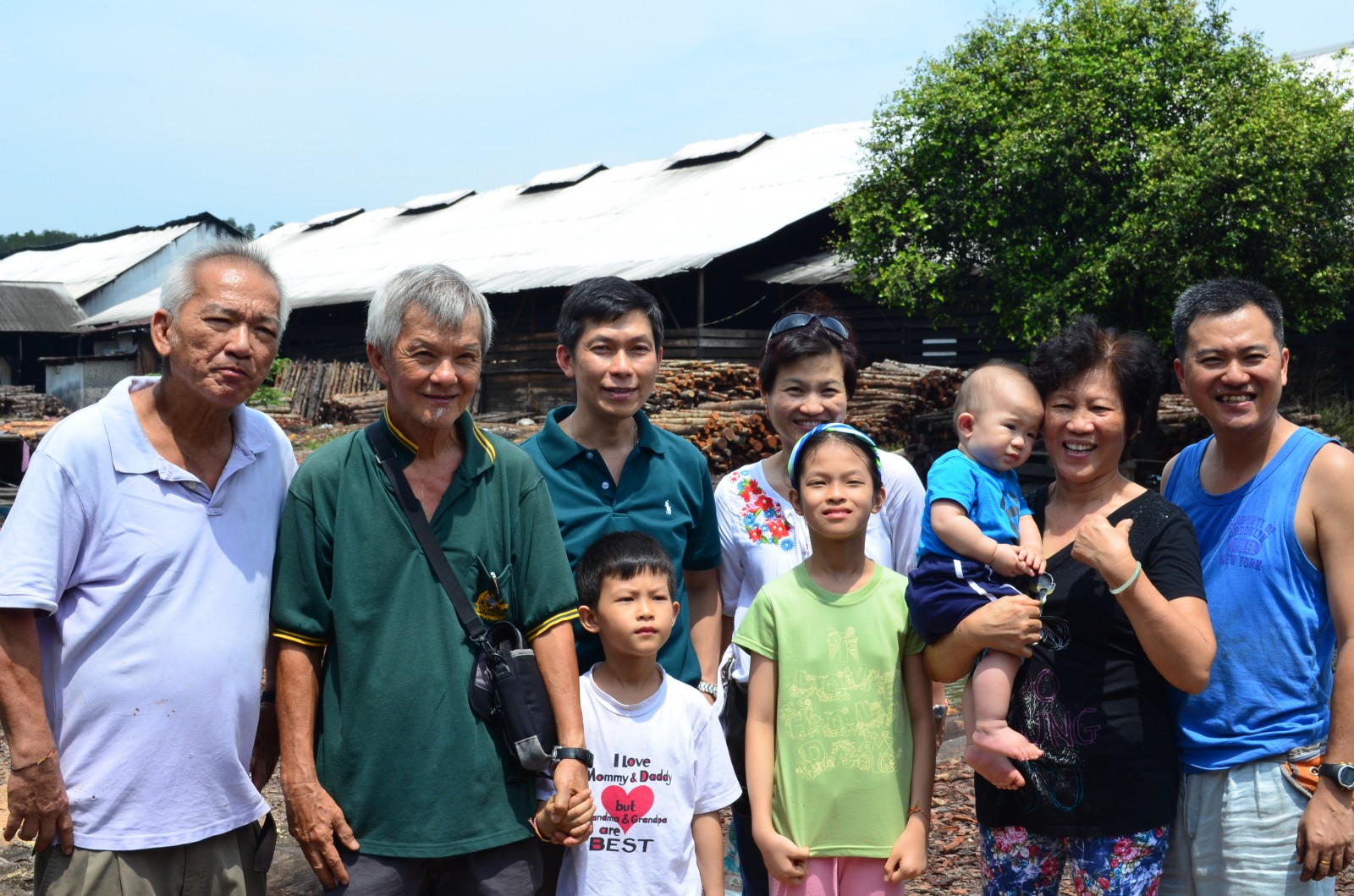AROUND 70 years ago, Japanese soldiers marched into the fishing town of Kuala Sepetang, near Taiping, and found that it was the perfect place to make an important commodity – charcoal.
The surrounding mangrove forest provided plenty of suitable timber, while the rivers provided an easy mode of transport. It allowed the Japanese to quickly set up factories where they could apply their traditional methods to produce some of the finest charcoal you could find.
Today, one family is still proudly maintaining that tradition in Kuala Sepetang, three generations after the first of its family started working at the Japanese factories. A group of BRATs was fortunate enough to visit them for one of its field assignments during the BRATs Ipoh & Taiping 2014 young journalist camp.

Meet the Chuahs: Chuah Kee Yong, 43, (right) and (from left) his uncle Chuah Chow Aun, 67, and his father Chuah Cheow Seng, 70, pose with their family at the charcoal factory.
Charcoal Factory Kuala Sepetang, run by the Chuah family, is one of several traditional charcoal factories still surviving in the area. The Japanese destroyed the charcoal kilns at the end of the Japanese occupation of Malaya, but locals were able to rebuild them and create an industry for themselves.
Chuah Kee Yong, 43, is the latest in the family to get involved in the business. He decided earlier this year to take a year off his job as an operations director at a gaming company to help his father Chuah Cheow Seng, 70, and uncle Chuah Chow Aun, 67, at the factory.
“This business has fed our family for three generations. That’s why I feel like I owe my life to it,” said Kee Yong, who now handles the factory’s business development.
The factory was founded in the 1940s when Kee Yong’s late grandfather, Chuah Khay Hor, obtained a local operating license, making him and his business partner Goh Kow Jee one of the pioneers of the charcoal business in Kuala Sepetang.
According to Kee Yong, the traditional method – which involves extracting moisture from the timber by putting them in smoked kilns – is still the best way to make charcoal. And for the method to work, you need skilled workers and experts, which no technology can replace.
For example, a highly-experienced worker is needed to smell the steam coming out from a vent in the kiln to determine whether the logs are ready after each step of the process (see sidebar). The same worker also feels the steam with his hand to determine whether the kiln is at the right temperature.
“Even arranging the logs inside the kiln requires skill. The heavy logs have to be placed vertically, and you have to make sure none of them fall during the smoking process,” added Kee Yong.

Chuah Kee Yong, 43, explains the process of making charcoal and the history behind his family’s business to a few BRATs members.
On top of that, an ingenious canal system was created to transport the logs from the mangrove forest to the factory. During high tide, the canal fills up, allowing boatmen to bring the logs to the factories, despite them being further inland. Incredibly, all the boatmen work alone – they chop the trees and transport them to factories without any help.
This fascinating process has made the factory one of the most interesting tourist destinations around the Taiping area.
Kee Yong’s family now conducts tours for groups from around the world. Kee Yong’s uncle, Chow Aun, is a particularly entertaining guide, especially with his stories, insight and occasional bursting into song. He also prepared sweet potatoes roasted in the charcoal kilns just for us BRATs!
The family’s contribution to tourism won them the President’s Award in 2009, which was presented to Chow Aun by the late Sultan Azlan Shah at the Perak Tourism Appreciation Awards, for turning the simple charcoal factory into a must-see tourist attraction.
Of course, the family often receives questions about the environmental impact of their factory. Kee Yong explained, however, that the industry is well-regulated. The mangrove forests, for example, are managed by the Forestry Department of Peninsular Malaysia, which makes sure all logging activity is done sustainably through replanting.
The bigger concern for the industry lies in the lack of skilled workers.
“It’s difficult working in the factory, and not a lot of people can endure the manual labour. They’d rather work in an air conditioned office,” said Kee Yong.
Almost all the workers at the factory are 40 and above, except one who is 21. But despite the challenges, Kee Yong and his family are confident the tradition will be maintained – because there will always be a demand for high quality charcoal.
To find out more about Charcoal Factory Kuala Sepetang, go to facebook.com/KualaSepetangCharcoalFactory.






Tell us what you think!